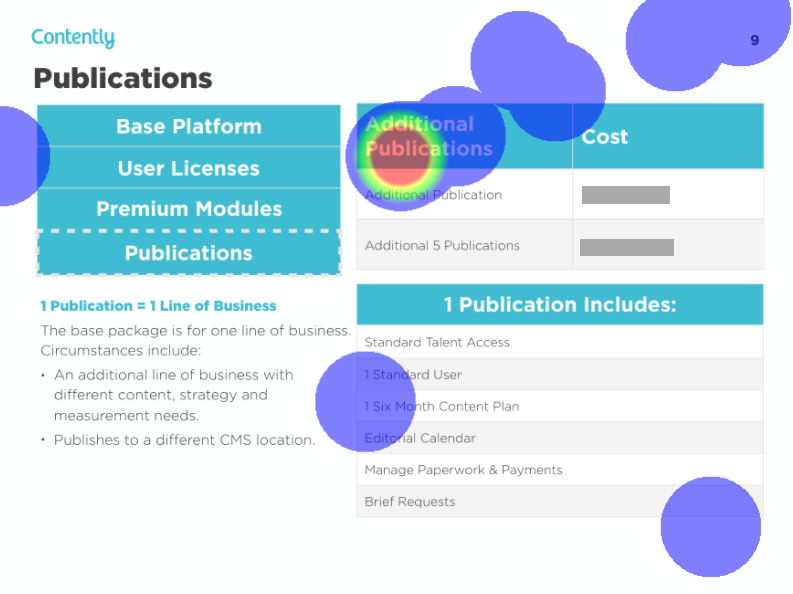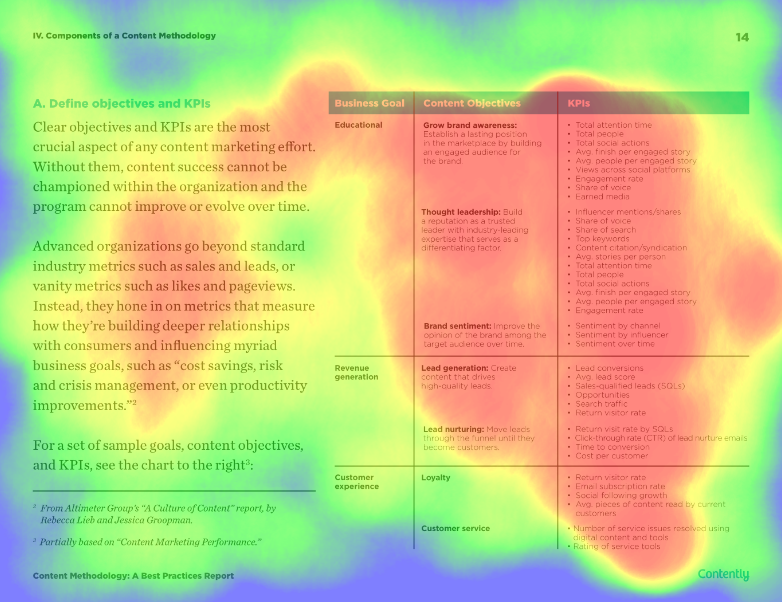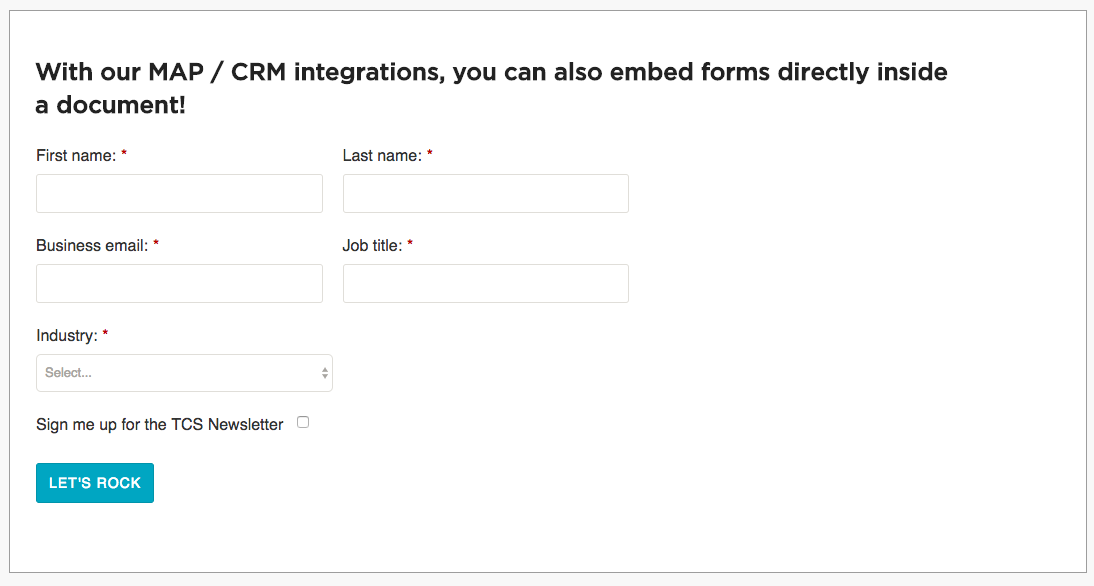Brands
How Docalytics Became Our Secret Weapon
This story is part of Contently’s Accountable Content Series, a collection of articles, webinars, case studies, and events we’ve designed to help marketers deliver measurable brand impact and business outcomes with content. To see more content in this series, click here.
Twenty-four years ago, the PDF, or portable document format, was released. In the digital timeline, that’s practically the age of dinosaurs. Yet the PDF, which is the go-to downloadable format for most businesses, has barely changed since its prehistoric beginnings.
When Contently acquired Docalytics two years ago, we knew it had the potential to change how businesses use downloadable content. But I’m not sure we were aware of just how much it would become our secret weapon.
Nowadays, Docalytics is used across departments—from sales to accounts to marketing—to perform a variety of functions thanks to its unique feature-set. Let’s go over a few of them below.
1. Sales enablement
In the past, when a salesperson sent downloadable collateral to a prospect, that was the end of the process. The salesperson wouldn’t know if prospects read it, what they read, or if they even bothered to download it in the first place.
Thanks to Docalytics, however, our sales team can track all of this—and more. For example, here’s the engagement report for a pricing deck one of our salespeople recently sent to a prospect. (Each green vertical bar represents one page in the deck.)

By using Docalytics, we know that the prospect only spent about 40 seconds with the collateral and skipped right ahead to pages five and nine. Page five includes the pricing outline, so it’s not surprising that a user would jump straight there. But take a look at what the person did on page nine:

Ah ha! It looks like this prospect wanted to know more about our pricing for additional publications. Now armed with this information, our salespeople can tailor the next call with this prospect knowing this was a main point of interest, a huge advantage they otherwise would not have been able to access.
2. Embedding and SEO activation
If you’ve ever tried to embed a PDF in an article, you know how much of a headache the process can be. Major content management systems (such as WordPress) don’t come with the ability by default, requiring you to download and install third-party plug-ins before you can even think about including your latest whitepaper in a relevant article.
Docalytics makes the process easy. Every Docalytics file comes with an automatically generated iframe embed code you can copy and paste into your CMS’s HTML. Here’s an example using one of our e-books:
And yes, Docalytics still captures the same analytics from an embedded document as it does a normal document page. One more key activation feature: Docalytics also allows you to customize the domain URL, meaning our SEO team can easily make our documents SEO-friendly.
2. Consistency and control
Let’s face it, a lot of companies have trouble keeping track of all their digital assets. The decks, brochures, e-books, and one-sheets just keep piling up. And over time, some of those assets need to be updated. Without any sort of organized library or system, it’s a strain on everyone’s time to send out new versions whenever there’s a tweak or major change.
Docalytics has eliminated that headache for our team. Thanks to version control, when a file in Docalytics is updated, every single version of that file gets updated as well. We don’t have to worry about Cyrus on the account management team sending an outdated version of a product one-sheet.
Docalytics also allows for sharing control. So if there is a sensitive file that needs to remain private, we can easily restrict the ability of users to post on social or print it out.

3. Content optimization and strategy
There are plenty of tools out there that analyze the performance of articles and infographics. But when it comes to downloadable assets like white papers or e-books, trying to gather useful data can feel like going back to the dark ages.
That’s why Docalytics has been such a valuable resource in our ideation process. When evaluating e-books and other big projects (which are often the most expensive to create), we get to see deeper levels of engagement.
Last July, for example, we published “Content Methodology: A New Model for Content Marketing,” which has been one of our best performing assets in the last year. We know that, on average, people have spent three minutes and 50 seconds with the asset in the last quarter. Eighty-two percent were engaged (meaning they looked at it for at least 15 seconds). But only 25 percent of readers actually finished the report.
Most intriguingly, we know exactly which pages resonated with readers. In the image below, the purple squares illustrate the mouse activity on each of the report’s 35 pages, starting with page one in the top left corner.

As you can see in the heatmaps, pages 13 and 14 got way more activity than any other pages. Let’s take a closer look at those two.


Both pages have visual elements that directly address our methodology. On page 13, people couldn’t get enough of the visualization of our methodology or the sidebar on the right. On page 14, people loved the table connecting business goals with KPIs.
From this data, we can assume two things: One, people love visuals and “chunky” text like the sidebar. They make for easier reading and can help simplify complicated subjects. Two, our prospects want to know how to tie content, business goals, and KPIs together.
As we brainstorm future story ideas, the edit team now has evidence that points to a need for more visuals, tables, and sidebars when explaining key concepts. And the more we can produce, the more evidence we can gather to test our assumptions.
Our sales team, meanwhile, knows to focus on tying content with business goals when explaining our platform to prospects. And our marketing team realizes it should send more in-depth information on executing a content strategy in any sort of drip campaign.
4. Lead generation
Docalytics has one more tool up its sleeve: the ability to easily embed lead forms within an asset. And because of that heatmap technology I mentioned above, marketers know where to place that lead form in the asset for maximum impact.
Take our methodology report: Since we know most people spend their time on pages 13 and 14, and that most keep reading on from there, it makes sense for us to add a form after page 14. Docalytics makes that easy with our CRM integrations.

Voila, we’ve inserted a lead form—not too early, not too late, but in just the right spot. And that’s the beauty of Docalytics: data, optimization, and integration for a format that has traditionally had none of the above.
Read more about how Microsoft used Docalytics to transform its demand generation strategy.
Image by Ivan Smuk / GettyGet better at your job right now.
Read our monthly newsletter to master content marketing. It’s made for marketers, creators, and everyone in between.




